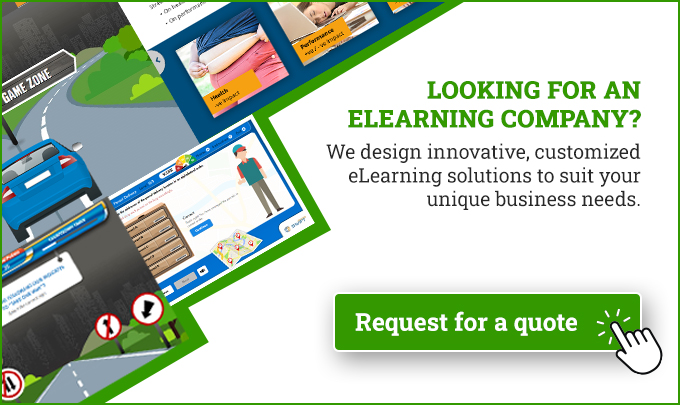Explore our “Follow Traffic Rules and Road Signs,” an e-learning sample course that uses progressive disclosure to simplify complex information.
Course Navigation
Lesson Zone: Guides learners through sequential pathways to acquire foundational knowledge and essential skills aligned with course objectives.
Game Zone: Enhances learning enjoyment and immersion through game mechanics, boosting learner engagement and participation.
About Our Course
We design technique that prioritizes essential information upfront while allowing learners to access more detailed content as needed.
Progressive Information Disclosure Using Gamification Elements
1. Ranking System: Learners earn ranks based on their performance, encouraging them to strive for higher achievements.
2. Badge System: Achievement badges (Gold, Silver, Bronze) acknowledge and reward learners for completing activities or mastering content.
3. Scoring Mechanism: Points are awarded for correct and timely answers, reinforcing positive learning behaviors.
4. Countdown Timer: Adds urgency and excitement to tasks, motivating learners to complete activities within a specified timeframe.
5. Click-and-Reveal Interactions: Learners can click on elements to reveal additional information or explanations, promoting active engagement and control over the learning process.
Understanding Progressive Disclosure in E-Learning
Storyline 360 is an advanced e-learning authoring tool developed by Articulate, designed for creating interactive and engaging online courses.
It allows instructional designers and educators to build multimedia-rich content, including simulations, quizzes, and interactive scenarios, without needing extensive programming skills.
Progressive disclosure breaks down complex information into smaller, more easily understandable pieces.
It begins with presenting essential information upfront and progressively revealing additional details as learners interact with the content or demonstrate mastery of concepts.
This approach is particularly beneficial in online education, where maintaining learner focus and engagement is crucial amidst diverse learning styles and preferences.
Benefits of Progressive Disclosure:
1. Improved Comprehension
2. Reduced Cognitive Load
3. Enhanced Engagement
4. Personalized Learning Experience
5. Effective Knowledge Transfer
Other Strategies for Implementing Progressive Disclosure:
Interactive Screenshots and Labeled Graphics: These visuals provide learners with an overview of a concept or process, allowing them to explore additional details by interacting with specific elements or labels.
Accordions and Tabs: These UI elements organize content into collapsible sections, presenting a summary or overview initially and expanding to reveal more detailed information upon learner interaction.
Modals and Tooltips: These pop-up windows or hover-over tips provide supplementary information when learners click or hover over specific elements, offering context or explanations without cluttering the main interface.
Adaptive Scenarios: Branching scenarios in eLearning adapt based on learner choices, progressively disclosing different outcomes or consequences based on their decisions.
Summary
Progressive disclosure is a powerful design strategy in eLearning, optimizing how information is presented to promote effective learning. Gamification is more than just a buzzword—it’s a powerful tool for transforming eLearning experiences. By integrating gaming elements into courses, organizations can create engaging, effective, and memorable learning opportunities that drive learner success.
eLearning Services
Blended Learning Solutions
We design and implement tailored strategies that combine traditional face-to-face instruction with digital learning platforms and resources.
Learn more about our Blended Learning Solutions.
Learning Management System (LMS)
We offers a robust Learning Management System (LMS) software to facilitate the administration, delivery, and management of educational or training programs.
Learn more about our Learning Management System.




